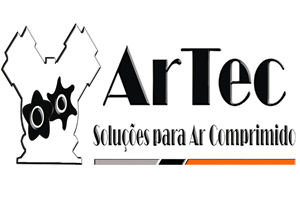How exactly to compose an assessment and a remark: typical plans, contrast of heroes as well as other
An evaluation is really a written analysis of a systematic text (an article, program or diploma work, a manuscript, a dissertation). The review plan includes:
- 1) the subject of the analysis (topic, genre associated with the peer-reviewed work);
- 2) the urgency of this subject program or diploma work, thesis, article, manuscript;
- 3) a short summary regarding the work being evaluated, its main conditions;
- 4) an assessment that is general of work for the reviewer;
- 5) shortcomings, shortcomings of work;
- 6) conclusions for the reviewer.
A remark provides just an over-all description of this work without step-by-step analysis, but contains practical guidelines: the analyzed text may be accepted for work with the publishing house or even for a degree that is scientific.
A plan that is typical composing reviews and commentary
- 1. The subject of the analysis. (within the writer’s work… When you look at the peer-reviewed work… In the topic of analysis…).
- 2. The relevance associated with topic. (the job is specialized in the topical topic… The relevance associated with subject is decided… The relevance for the subject will not need evidence that is additionalwithout doubt, it really is obvious…)
- 3. The formula of this thesis that is main. ( The issue that is central of work, where in actuality the author realized the absolute most (significant, concrete…) benefits… The question about…) is brought to the fore.. in the article.
- 4. Summary associated with the work
- 5. General evaluation. (Estimating the work all together… Summarizing the outcome of this specific chapters… hence, the work in mind… The author revealed their mind. The writer’s unconditional merit is a brand new methodical approach (the proposed classification, some improvements of existing concepts…), the writer, of course, deepens our knowledge of the event under investigation, reveals new top features of it… Work, unquestionably, starts…)
Policy for reviewing the book
Plan for reviewing the written guide includes:
- 1. Date of publication associated with ongoing work(with regards to had been written or published).
- 2. Reputation for creation, the look for the work.
- 3. Genre peculiarity for the work.
- 4. The plot and composition for the work (what is this work, title its events that are main note the string, the culmination, the denouement, the role associated with the epilogue additionally the epigraph (if you have).
- 5. Subjects (as described into the ongoing work), exactly what topics are moved when you look at the work.
- 6. The difficulties (which problems, concerns) are addressed when you look at the work, they being considered by the author whether they are important, why are.
- 7. Traits for the primary creative images (names, bright popular features of look, social situation, life philosophy, views around the globe, relationships along with other heroes, experiences, feelings, just what problem/problems are associated with this hero.)
- 8. The concept and pathos associated with work ( what the author wanted to say, their view associated with author regarding the issues involved, just what he calls).
- 9. Host to the task into the journalist’s work (is it essential work to understand the journalist’s creativity, whether or not it reflects the primary themes and problems in their work, is it possible to judge by this work about the journalist’s design, their worldview.)
- 10. The place of the ongoing work with a brief history of literature (whether this tasks are significant for Russian literature together with world letter trips, and just why).
- 11. Your impression regarding the ongoing work(we liked/did not like, and just why).
The conditional scheme of comparison of the heroes associated with the work:
- – Features of the portrait faculties: the way the character characterizes the looks, clothing, etc;
- – Origin;
- – genealogy and family history, generic and characteristics that are individual
- – Characteristics of the character, habits;
- – Expressive details;
- – Education, a type of knowledge;
- – Speech attribute;
- – capability to internal dialogue, self-analysis;
- – The ratio of this hero to people;
- – Attitude for the individuals around into the hero;
- – the way the hero exhibits himself into the situation of choice;
- – how can the type change through the entire work.
Plan of analysis of dramatic works
- 1. Time and energy to create and publish performs.
- 2. The area occupied when you look at the work associated with the myessay.org playwright.
- 3. The theme for the play and expression of a specific life material.
- 4. Actors and their grouping.
- 5. The conflict that is dramatic of tale, its originality, level of innovation and acuity, deepening.
- 6. The growth of dramatic action as well as its stages. Exposition, the plot, the peripeteias, the culmination, the denouement.
- 7. The composition of this play. The part and significance of every work.
- 8. Dramatic figures and their relationship with action.
- 9. Speech faculties associated with the characters. The partnership of nature and words.
- 10. The part associated with the dialogues and monologues into the play.
- 11. Identify the author’s place. The part of stage directions in drama.
- 12. Genre and also the originality that is apparent of play. Conformity associated with the genre, the writer’s biases and preferences.
